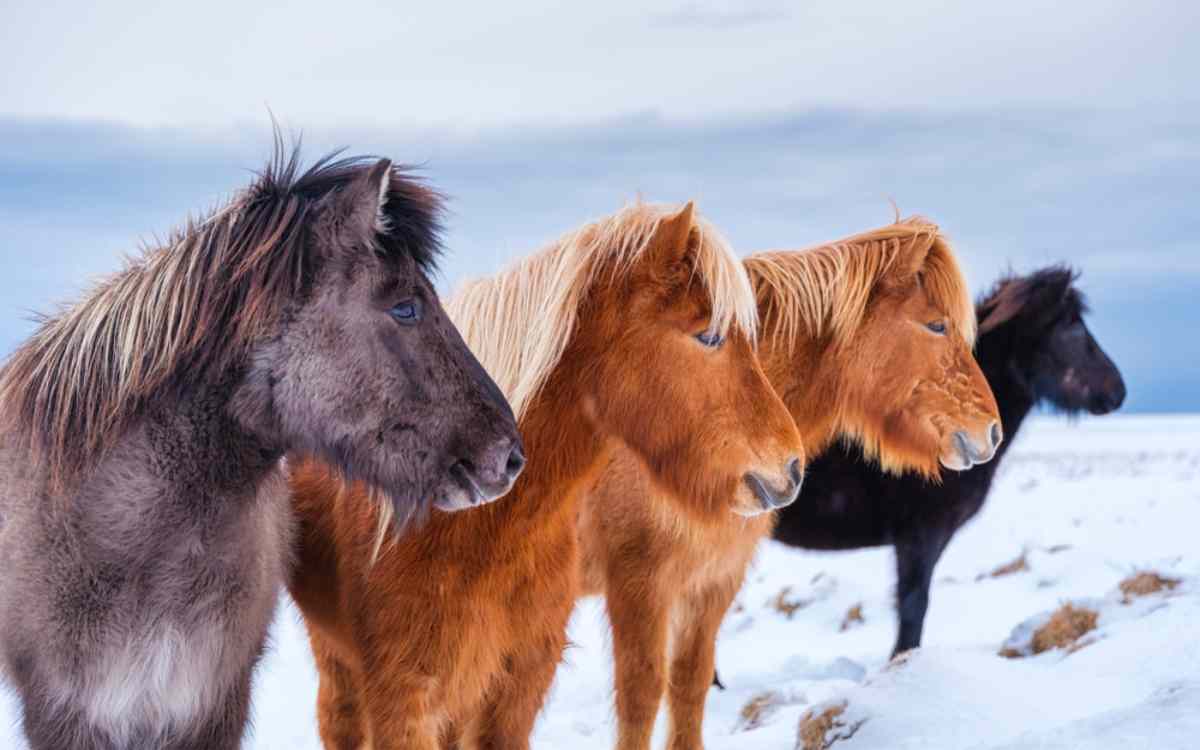In the Land of Fire and Ice, volcanoes are the order of the day, with one of them being a bit of a sleeper agent who turned into a main culprit here on the island: Fagradalsfjall.
As you might know, things have heated up here on the island recently due to volcanic activity. So, whether you are a volcano chaser or just have an upcoming trip to Iceland planned, Fagradalsfjall and its volcanic chain reaction are not to be missed. In this article, we tell you everything you need to know about this fiery spectacle and how to prepare for your trip.
What Makes Fagradalsfjall So Impressive?
Fagradallsfjall has been a known volcano in Iceland for many, many years. Although there were always some rumblings and rumors regarding the volcanic activity in Reykjanes, this specific volcano was dormant for 800 years on the peninsula. But in March 2021, the volcano came back to life and started erupting.
The newly awakened volcanic system so close to the capital made it almost a precursor of what awaited the peninsula, with all the continued eruptions taking place there today. Although Fagradalsfjall is no longer erupting, you’ll find a typical eruption landscape there with all sorts of lava formations and steam and gases being emitted from the crater.
The black surface also almost appears normal, but this layer of hardened lava is not even a meter thick and covers molten lava of more than 1200 degrees Celsius, so watch your step when you visit.

Understanding Fagradalsfjall and the Volcanoes in the Reykjanes Peninsula
Many are astounded to discover that we actually have something like volcano tourism here on the island. It seems incredibly dangerous and irresponsible to them, but they are missing two key elements of Iceland:
-
Icelanders have been living side by side with these forces of nature for thousands and thousands of years. We understand Iceland’s volcanoes in a way visitors will struggle to grasp, and we know exactly what to look out for as potential signs of trouble. The entire island is also well equipped and well prepared for any volcanic activity, and in the case of an eruption, we already have everything sorted, such as evacuation plans and housing.
-
Visitors have seen one too many Hollywood movies and don’t really understand volcanoes. Even though the volcanoes depicted in the movies where smoke, ash, fiery projectiles, and molten lava are almost rocket launched into space, devouring everything in their way almost instantly, there are also other types of volcanoes, which we have plenty of on the island, and which depicts Fagradalsfjall and most of the Reykjanes Peninsula.

Fagradalsfjall is what is called a shield volcano. These guys have very shallow slopes and can often just look like a little hill or even be completely overlooked without the typical mountain or conical peak shape. Think of a young child trying to draw a straight line with a free hand, and imagine the “bumps” being shield volcanoes, and you’ll have a pretty good idea of what we’re talking about.
It will also help you understand the next part better. Imagine you would take that drawing and turn some of these “bumps” into ant nest entrances. Now draw an interconnected ant tunnel system “underground” under the line and with the “bumps” as their way in and out of the system. Give each “bump” a funny name. Then, take a red pencil and color in the tunnels. You should now have a rough and layman’s drawing of what the volcanic system in the Reykjanes Peninsula looks like.
Although we have numerous volcanoes (aka “bumps”), the entire volcanic system underground is pretty much interconnected, meaning that activity in one part can have a domino effect on the rest. Eruptions here are not explosive, which means lava can be pushed out from the “bumps”, flowing at incredibly slow speeds (honestly, we’re not promoting that you try this, but a small child can outrun these lava flows).

Another thing that can happen, and is what we’ve seen at the recent eruptions, is that a tear will open in the earth between these “bumps”, merely making the lava underneath visible or having it “spill out” on the sides like a lazy river that’s too full (also the reason why one volcano can have multiple eruption sites here in Iceland).
This is a very simplified explanation, but it’s merely to help those who do not know much about volcanoes or the island to visualize and understand things better and to show why we can safely bring visitors to the volcanoes and eruption sites.
Where is Fagradalsfjall Volcano in Iceland?
If you check where Fagradalsfjall is on a map of Iceland, you’ll see that Fagradalsfjall falls in the southwestern part of Iceland on the Reykjanes Peninsula. The nearest town is Grindavik, about 10 kilometers away, and the capital city of Reykjavik is roughly 32.5 kilometers away.

How to Get to Fagradalsfjall Volcano in Iceland
You basically have two options when it comes to visiting Fagradalsfjall:
Go on a Tour
If you book a spot on one of our tours here on the island, you’ll have the option of a dedicated tour to the volcano, or have the volcano as part of a multi-attraction tour. You can also request a customized private tour from any of our tour operators or local guides.
Drive Yourself
This will always be our favorite way of exploring the island, since you’re the one at the helm of your own adventure. Since Fagradalsfjall is so close to some of the main “hubs” here in Iceland, it’s pretty easy to reach via a self-drive:
From Reykjavik (a 55-minute drive)
-
Take Road 41 southwest towards Keflavik.
-
Turn onto Road 43 towards Grindavik.
-
Follow Road 427 straight into the parking lot (the parking fee can be paid via an app).
-
Hike the rest of the way to Fagradalsfjall.
From Keflavik Airport (a 45-minute drive)
-
Drive east on Road 41 towards Reykjavik.
-
Turn right onto Road 43 towards Grindavik.
-
Follow Road 427 straight into the parking lot (the parking fee can be paid via an app).
From Grindavik (a 10-minute drive)
-
Drive east on Road 427 to Sudurstrandarvegur.
-
After about 10 minutes, you will see the signs directing you to the parking lot of Fagradalsfjall Volcano.
Is Fagradalsfjall Still Erupting?
No, the last Fagradalsfjall Volcano eruption was in 2021. However, the volcano is still considered to be active (so future eruptions are possible). Also, if you understand the concept surrounding the intricate volcanic systems of the Reykjanes Peninsula, you’ll understand that even though Fagradalsfjall isn’t erupting, the system it’s connected to is still erupting elsewhere on the Peninsula in 2024.
Is it Safe to Visit Fagradalsfjall Volcano?
Yes. Armed with thousands of years of knowledge and preparation, Iceland is well-equipped to deal with its volcanic inhabitants and allow visitors to get up close to these incredible forces of nature. It also helps that Fagradalsfjall Volcano isn’t currently actively erupting.

Do You Need a Guide to Visit Fagradalsfjall Volcano?
No. Unlike glacier hiking or ice cave exploring in Iceland, you’re not required to have a guide to visit Fagradalsfjall Volcano. You are more than welcome to hike and explore the area yourself, as long as you prioritize your safety. If you would like some insider insights and a bit more knowledge than you can gather from a guidebook, then having a guide with you on the journey isn’t such a bad idea.
When is the Best Time to Visit Fagradalsfjall?
Many will say the best time to visit Fagradalsfjall is during an active eruption, but it will honestly depend on your own personal preferences and budget. Just take the following into account when deciding when to visit:
-
Visiting Fagradalsfjall is an outdoor activity, so you’ll need to take the weather and daylight hours into account. Therefore, visiting during the colder months of the year might not be ideal.
-
Summertime is considered peak season in Iceland, which means a lot of extra foot traffic and peak season prices here on the island.
-
Currently, there are active eruptions occurring due to the Reykjanes Peninsula volcanic system, so if you are after the thrill of the red-hot lava, plan your trip around the latest activity and include a stop at Fagradalsfjall.

What to Pack for a Visit to Fagradalsfjall
You’re not going to the moon, so it’s not like you’ll need any special gear. But there are a few things you’ll need to take note of:
-
Ensure you’re wearing layers. It might be a cold and windy day, yet things can get heated at the volcanoes, so you always want to be able to take things off and put things on during a visit to the volcanoes.
-
You need sturdy hiking boots for the rocky and uneven surfaces.
-
Take a little extra water and snacks. That way, you’re covered if the hike takes longer than expected or the unexpected happens, and you’ll need to wait for the “rescue” team.
-
If you’re an avid photographer, the camera on your mobile phone ain’t gonna cut it. So, remember to pack a proper camera if you would like to take a few once-in-a-lifetime snapshots of the volcanic landscape.

Hiking & Exploring Fagradalsfjall
There are actually a few ways to explore and see Fagradalsfjall, some of which mean hiking to Fagradalsfjall itself or hiking around it, where one can still get an incredible view of the area as well as a few other volcanic hot spots (pun intended). The following are the hiking routes you can choose from:
Path A: Mount Fagradalsfjall
Distance: 12-16 kilometers out-and-back, depending on where you find parking
Duration: 4-5 hours, depending on your pace
Trail Highlights: This trail will take you to the eruption sites of 2021/2022.
Path C: Mount Langihryggur
Distance: 8 kilometers out-and-back
Duration: 2-2.5 hours, depending on your pace
Trail Highlights: This trail will take you to the eruption sites of 2021/2022/2023. Here, you will actually get to see some of the lava from the new eruption at Mt. Litli Hrutur, although you won’t get to see the crater itself.

Path E: Meradalir
Distance: 18-20 kilometers out-and-back
Duration: 5-6 hours, depending on your pace
Trail Highlights: This trail offers exceptional views all along the way and will take you to the eruption site of 2023. Just keep in mind that this hike is considered challenging.
Other Things to See and Do Near Fagradalsfjall
If you want to add a few more interesting things to see and do in the area to your trip itinerary, you can consider the following:
-
Valahnukamöl Cliffs
-
Krysuvik Geothermal Area
-
The Bridge between the Continents at Silfra Fissure in Thingvellir National Park
-
Kleifarvatn Lake

Helpful Tips and Advice When Visiting Fagradalsfjall and Other Volcanoes in Iceland
If this is your first visit to the island or to our volcanoes, please follow the below tips and advice to ensure you have a memorable and safe trip:
-
Icelanders have the utmost respect for our environment, so please don’t be that person who litters, breaks things, picks plants, etc.
-
Always stay on the marked and dedicated trails and pathways. This is to protect our environment and ensure your safety, as one wrong step can literally mean having a foot burn off.
-
Some visitors bring hiking poles since they do help whenever a trail starts to become a bit steep.
-
If you plan on visiting during the months with fewer daylight hours, please bring a headlamp. This will ensure that you have light even when caught in the dark.
-
The Iceland weather can be unpredictable (we are an island, after all), so always keep an eye on the Icelandic weather forecast as well as the Icelandic road conditions, especially right before heading out.
-
We won’t ever recommend that you go hiking alone, but if you do, always ensure that you’ve let family/friends and someone at your accommodation know, so everyone will know when to start sounding the alarm and where to start looking.

Fagradalsfjall: Just a Short Drive Away
Most visitors to the island will have Reykjavik as their first (and sometimes only) stop after landing at Keflavik Airport. Fagradalsfjall is one of the attractions in Iceland that’s just a short drive from the capital city, so there’s no excuse not to visit. Just rent a car in Reykjavik and follow the directions outlined in this article to head out to your volcanic adventures at Fagradalsfjall and its surroundings.


 By
By



